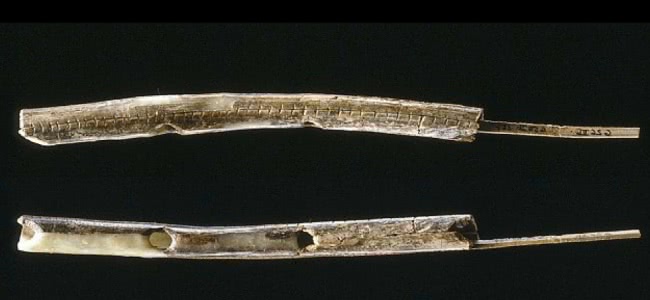If you thought the world’s oldest instrument was some form of guitar, or even drum. Then scientists have just proven you wrong.
Archaeologists excavating a cave in southern Germany have discovered two ancient instruments that have been dated as being the world’s oldest.
Science Blog Io9 reports that the instruments were unearthed in Germany’s Geißenklösterle Cave in an archaeological dig studying the arrival and spread of humans across Europe.
The pair of ancient relics are in fact two flutes. Much more than simply being prehistoric vevuzela, the two primitive flutes have been fashioned from bone, not wood, and contain very simple scales of two-to-three holes. One of the instruments has been carved from bird bone, while the other, from mammoth ivory.
Further analysis of the artefacts by an Oxford University team specialising in the ageing of animal bones dates both at somewhere between 42-43,000 years old.
If the archaeologists research is proven correct, these new discoveries could pre-date what is thought to be the world’s current oldest instrument (another flute made from vulture wing bone according to BBC) by thousands of years. It’s further proof also to the theory that the world’s first musicians were flautists.
Tom Higham of Oxford University, the head of the team that helped carbon-date the instruments has talked of the Geißenklösterle Cave as “one of several caves in the region that has produced important examples of personal ornaments, figurative art, mythical imagery and musical instruments.”
Their research shows the flutes may have been used for not only recreation, but for religious purposes as well. Experts also believe that it was the mastery of music that gave Homosapiens an edge over Neanderthals, by building larger social circles and expanding their networks through music.




































